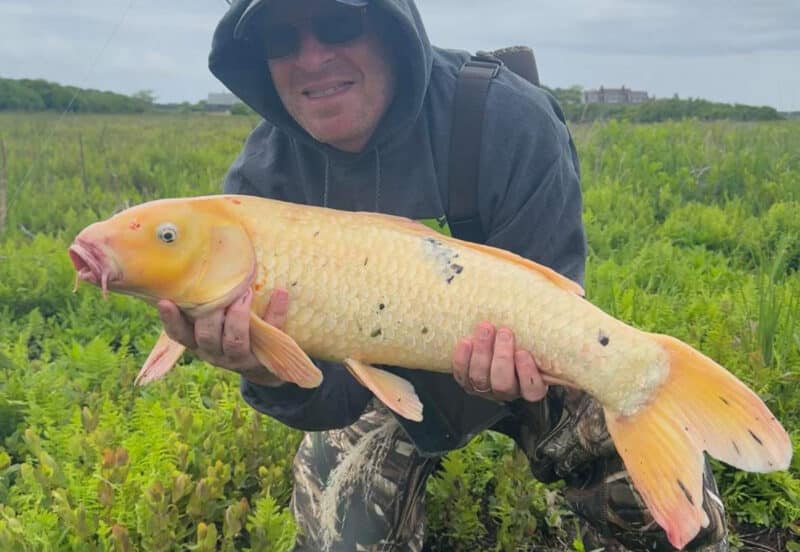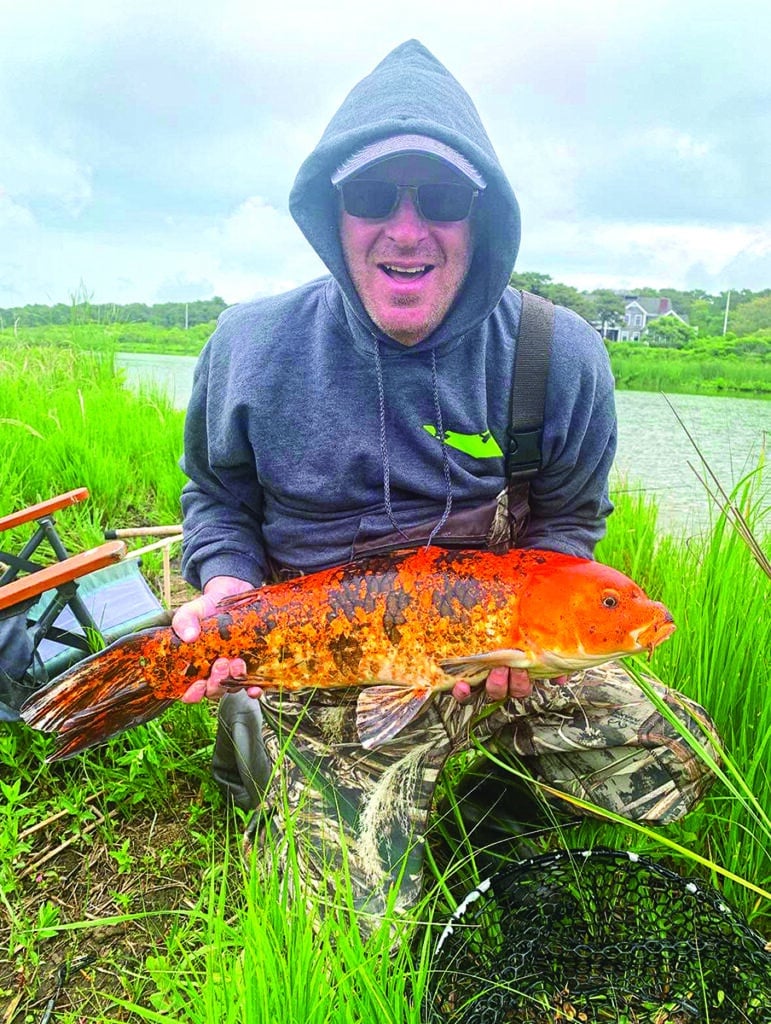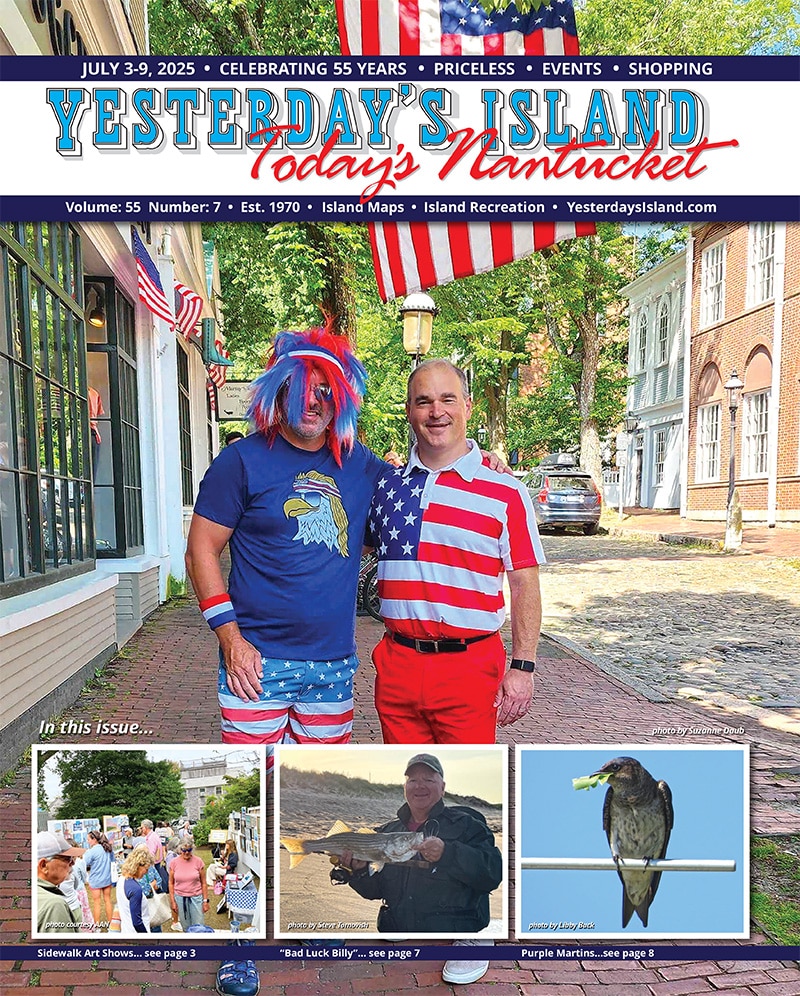by Dr. Sarah Treanor Bois, PhD
Director of Research & Education at the Linda Loring Nature Foundation
In the early 2000s, I was sampling vegetation in the Middle Moors for a joint project between the Nantucket Conservation Association and Massachusetts Audubon. It was a hot summer with long days sampling transects through the dense brush. Ticks, poison ivy, thorns, and dehydration were my worst enemies. One day I thought I was hallucinating from lack of water when I saw a relatively small fluffy bunny nibbling vegetation in front of me. It wasn’t scared of me and just went about eating as if it was pleased to see me. This wasn’t the common Eastern Cottontail ubiquitous on Nantucket. This bunny was chocolate-colored with long fur and floppy ears.
Fortunately for me, my co-worker also saw the bunny. I paused, drank some water, and we watched it for a bit before it hopped off into the underbrush. What we were facing wasn’t a recently lost bunny: the habit of the animal, the distance we were from any house, road, or even path, led us to believe this was a released pet that had been living off the land for some time. This little chocolate bunny was fending for himself in the “wilds” of the Middle Moors. This cute mirage makes a funny story when telling “tales from the field.” However, released pets can be a serious wildlife problem and potentially cause harm to the habitat and to other animal species. One lone bunny isn’t necessarily a problem: chances are it became a meal for a hungry raptor at some point, especially being slow and unafraid. But the story of released pets doesn’t end with one bunny. There are many examples around the island with potentially greater impact.
Last week many of us saw a photo making the rounds on Nantucket social media of Tue Nielsen holding a huge fish—a trophy for our fresh water for sure. The species? A massive koi fish. No, koi aren’t native nor are they meant to be in our great ponds. But there they still are. Koi fish are colorful, ornamental versions of the common carp. Though carp domestication is believed to have begun in China as far back as the 4th century, modern Japanese koi are believed to date back to early 19th-century Japan where wild, colorful carp were caught, kept, and bred by rice farmers. There is still disagreement about genetic distinction and sub-species versus full species. But one thing is for sure, these koi don’t belong in Miacomet Pond.
Nielsen found out about the koi from James Hatton, who took him out and “showed him the ropes” when it came to the koi in Miacomet. According to local legend and knowledge from neighbors living in the Miacomet area, there was a terrible three-day rainstorm about 30 years ago. A koi pond at a house up on the hill (not to be named) above Miacomet Pond flooded due to the large amount of rain. Several of the fish got out of the pond and rolled or swam down the hill, and they’ve been in the pond ever since. One fisherman said there were five of them last time he checked—30 to 40 pounds each—and that they are almost always together. Monsters of the deep for sure! Some people say there are about 15 and one islander said he thought there were up to 30 fish! One thing is certain: they are reproducing and flourishing. Take a kayak out on Miacomet, and you may be “greeted” by some huge koi. While fun on the rod, for sure, they aren’t for eating in my book. Be careful as well: this time of year Miacomet has been having harmful algal blooms.
So what’s the problem with the koi fish? Koi and goldfish are two commonly released pets in natural water bodies around the country. Koi grow and reproduce rapidly and can survive pretty low temperatures. They also have a voracious appetite. Koi will eat anything, including plants and fish eggs. They dig along the pond bottom and edges, uprooting plants and fighting with native fish for food. As a result, when released into natural water bodies like our local ponds, they can quickly demolish all the food sources that the rest of the fish depend on. And once these invasive species are in a water body, they are not easy to remove. So please, do not release unwanted fish into our ponds. Once you introduce something into a new environment, it can have serious ecological consequences.
Along with koi and other aquarium fish come aquarium plants. Dumping out aquariums is the number one way that invasive aquatic plants are introduced to an area. The same small pond that accidentally released the koi all those years ago was the source for a relatively new invasive species for Nantucket—parrot feather. This aquarium plant is native to South America and is in a small pond that feeds into Miacomet. The Nantucket Land Bank has been working for years on the management of the population, working to eradicate it before it spreads into the larger pond. It is considered an ecological threat to ponds because of its tendency to grow in dense mats, clogging waterbodies and making them nearly impassible. It can also be especially hard to treat with herbicides due to its waxy cuticle surface, and it’s not ideal to pick by hand because of how easily it spreads. The Land Bank has been doing a great job at preventing the further spread of parrot feather, but prevention is the key. Please don’t dump aquarium tanks into our ponds!
Aside from fish and plants, turtles also have a reputation for surviving as released pets. Red-eared sliders, freshwater turtles native to south and central US, are causing environmental problems in water bodies across the globe. They are easy to identify by their distinctive red stripe on the side of the head and are very popular pet turtles for their size (6-10 inches as adults) and tolerance of many conditions. They can be very long-lived (up to 40 years) and, thus, often get released when someone gets tired of taking care of them or they get beyond the cute “small turtle” phase. Red-eared sliders are considered one of the worst invasive species in the world by the International Union for Conservation of Nature (IUCN). Many countries have banned their sale and importation. They can grow larger when out of captivity and are aggressive in feeding behavior, out-competing with our native painted and spotted turtles for food. Red-eared sliders have well-established populations throughout the state and have been found here and there on Nantucket. If you see invasive animals, please email info@llnf.org (the Linda Loring Nature Foundation), and we will get you to the right person.
There are other non-native pets released into the wild either purposefully or accidentally. So keep an eye out! The worst offender, by far, on Nantucket, however are feral cats. Former pets or un-owned felines, these cats now have multiple generations living around our island. Sure, there is plenty of food for them, but at what cost? Feral cats have been implicated as a cause or contributor to the extinction of 33 species of bird, reptile, and mammal species on islands world-wide. We have rare ground-nesting bird species on Nantucket that do well on-island because of the lack of predators. Cats have been responsible locally for shorebird deaths (adults and chicks) as well as other birds and small mammals. We won’t solve this issue overnight. We love our pets, and cats are a difficult one to consider as a wild animal. The best thing we can do right now is to keep our pet cats indoors. That will help alleviate the problem or at least not make it worse.
What to do about unwanted pets? The best advice is simple, please don’t release a household pet of any sort in to the wild. If you’re having trouble caring for your pet, try to rehome it. We suggest reaching out to the community via social media for others who may be interested or check in with Nantucket Island Safe Harbor for Animals (NISHA) about the local options for rehoming. Prevention is the easiest and best way to protect our diverse native flora and fauna!




